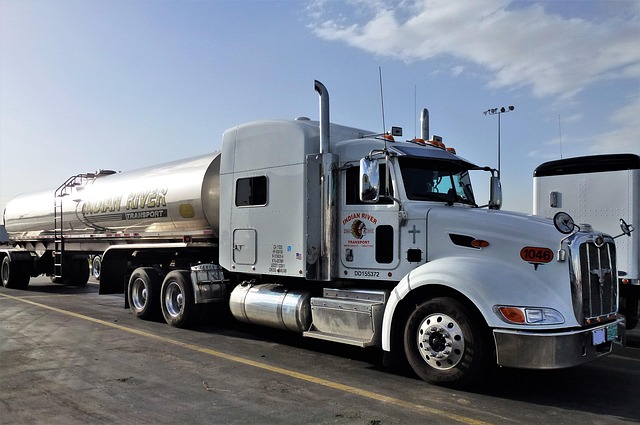Looking to register your car in California? This comprehensive guide walks you through the entire process, ensuring a smooth experience. From understanding key requirements for car registration in California to navigating the crucial step of VIN verification, we cover it all. By gathering the necessary documents and completing the VIN check, you’ll be well on your way to securing your vehicle’s registration. Discover how to choose the right registration class, pay fees, and finally receive your official registration certificate.
- Understand California Car Registration Requirements
- Gather Necessary Documents for VIN Verification
- Perform Vehicle Identification Number (VIN) Check
- Choose an Appropriate Registration Class and Pay Fees
- Submit Application and Receive Your Registration Certificate
Understand California Car Registration Requirements

Before registering your car in California, it’s crucial to understand the state’s specific requirements for vehicle registration. One key aspect is ensuring the Vehicle Identification Number (VIN) is accurate and available through a process known as VIN verification. This step is essential to prevent fraud and ensure the vehicle’s history is accurately represented.
In California, you’ll need to undergo a mobile VIN inspection or use a trusted mobile vin verifier to check the VIN against the manufacturer’s records. This verification ensures your car meets all safety and environmental standards set by the state. Once you have this information, you can proceed with the registration process, which includes submitting necessary documents and fees to the California Department of Motor Vehicles (DMV).
Gather Necessary Documents for VIN Verification

To register your car in California, you’ll need to go through a process known as VIN (Vehicle Identification Number) verification. This involves ensuring that your vehicle meets all safety and emissions standards set by the state. Before you begin, gather all necessary documents, including your vehicle’s registration from the previous state, proof of insurance, and a valid driver’s license. Additionally, obtain your vehicle’s VIN, which is typically found on the vehicle’s identification plate or in its owner’s manual.
For a convenient and efficient mobile vin inspection or mobile vin verification, consider using services that offer mobile vin verifier. These options allow you to complete the necessary checks without having to visit a DMV office. By ensuring your paperwork is in order and having your VIN ready, you’ll be well on your way to registering your car smoothly and promptly in California.
Perform Vehicle Identification Number (VIN) Check

Before registering your car in California, it’s crucial to perform a Vehicle Identification Number (VIN) check. This step is essential for ensuring that the vehicle you’re planning to register is legitimate and hasn’t been reported stolen or had any outstanding issues. The process typically involves verifying the VIN through a state-approved database, which can be done at a local DMV office or even via a mobile vin verification service.
A mobile vin inspection offers convenience by allowing you to complete this requirement from nearly anywhere. This method streamlines the registration process by providing an immediate and accurate VIN verification result. Once your vehicle passes the vin inspection, you’ll have one less hurdle to clear on your way to officially registering your car in California.
Choose an Appropriate Registration Class and Pay Fees

Choosing the right registration class is a crucial step in registering your car in California. The state offers various classes based on vehicle type and use, ensuring that owners pay fees aligned with their specific circumstances. For personal vehicles, you’ll typically fall under Class 3 or 4. Class 3 covers cars, trucks, and SUVs used for personal transportation, while Class 4 is for larger vehicles like minivans and small cargo vans.
Fees vary based on the vehicle’s weight, age, and emission standards. It’s essential to complete a Vehicle Identification Number (VIN) verification process, which can be done through a mobile VIN inspection or at a designated location. This step ensures accuracy in registration and helps calculate the correct fees. Remember, timely payment is key; late fees apply, so plan accordingly to avoid any delays in getting your vehicle on California’s roads.
Submit Application and Receive Your Registration Certificate

After completing the necessary paperwork, the next step is to submit your application and undergo a crucial process known as VIN verification. This involves providing detailed information about your vehicle, including its make, model, year, and unique Vehicle Identification Number (VIN). A mobile VIN inspection or verification service can be particularly convenient here. These services allow you to capture and transmit your VIN digitally, ensuring accuracy and speed in the registration process.
Once your application is approved, the California Department of Motor Vehicles (DMV) will issue your registration certificate. This document officially registers your vehicle and allows you to legally operate it on California roads. Always keep this certificate handy, as it’s essential for future interactions with the DMV or law enforcement agencies.
Registering a car in California involves understanding specific requirements, gathering essential documents, and completing a VIN verification process. By navigating these steps, from identifying the appropriate registration class to submitting your application, you’ll be well on your way to securing your vehicle’s official registration certificate. Remember, a thorough VIN check is crucial for ensuring compliance with state regulations, making it an integral part of the registration process in California.
